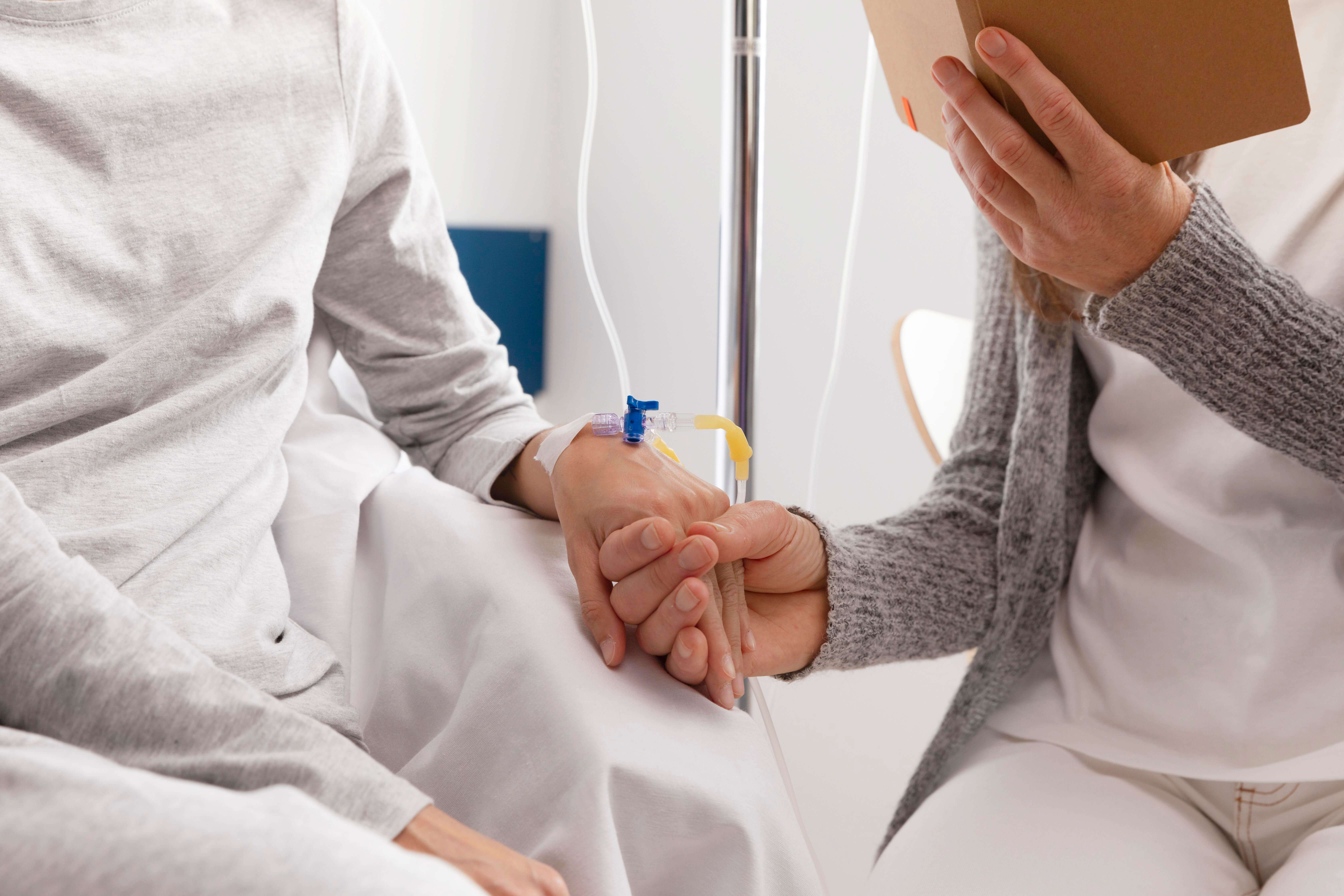The final stage of prostate cancer signals a dramatic change in both medical treatment and personal objectives. Though conversations regarding end-of-life symptoms can be taxing, knowing these shifts offers crucial clarity during a period of emotional complexity. Knowing the symptoms of advanced prostate cancer helps patients and their loved ones make more educated decisions on comfort care, pain management, and priorities of quality of life.
Usually, the course to end-stage prostate cancer is one whereby the illness has progressed from the prostate to far-off areas of the body, especially the lymph nodes and the bones. By now, the emphasis of treatment has usually shifted from intensive treatment to assuring comfort and preserving dignity. This information enables families to plan required support systems, have meaningful discussions with healthcare experts, and—above all— maximize their time together.
Knowing what lies ahead helps caregivers better predict and meet their loved one's evolving needs,e lowering their uncertainty about the future. This understanding also enables families to set up emotional and pragmatic support systems, guaranteeing that the patient and their caregivers get the help they need during this trying time.
Understanding Prostate Cancer
Fundamentally, prostate cancer results from cells in the prostate gland starting to proliferate wildly, eventually leading to what can become a terminal illness. Though they may be minor at first, early prostate cancer symptoms get more noticeable as the condition advances. Underlying the bladder, this walnut-sized gland is essential in generating seminal fluid. While most cases advance gradually, some kinds can become aggressive and treatment-resistant.
Several factors influence prostate cancer progression. Age remains the primary risk factor, with most diagnoses occurring in men over 65. Genetic predisposition, particularly in those with family histories of prostate or breast cancer, increases risk substantially. African American men face higher rates and often more aggressive forms of the disease. Lifestyle factors like diet and obesity may also contribute.
Good treatment depends on understanding the disease stages. From being limited to the prostate to evolving into a condition where it travels to bones and other organs, the illness moves through several phases. As the disease progresses, patients may experience various symptoms, including difficulty swallowing, as the cancer affects multiple body systems. For every stage, there are several therapeutic choices; nonetheless, a major turning point occurs when stage 4 develops resistance to hormone therapy. At this point, symptoms become more severe, and the disease becomes increasingly difficult to control. This progression from early stages to its final phases requires careful monitoring and adjusted treatment approaches.

What Happens in the Final Stages of Prostate Cancer?
Understanding System-Wide Changes
Advanced-stage prostate cancer alters many body systems significantly. Cancer cells acquire resistance to hormone treatment and start to spread more aggressively as prostate cancer advances.
Bone Metastasis and Pain
Particularly impacting the bones, where cancer cells generate areas of weakness leading to fractures and severe pain, the progression from early prostate cancer stages to stage 4 prostate cancer brings progressively difficult symptoms of prostate cancer. This bone involvement typically affects the spine, hips, and ribs first, gradually expanding to other skeletal areas.
Lymphatic System Effects
When prostate cancer stage 4 advances, the lymphatic system becomes heavily involved, with enlarged lymph nodes potentially pressing against vital organs and blood vessels. Apart from compromising normal circulation and organ functioning, this compression can lead to edema in the legs and groin area.
Changes in Major Body Functions
Cancer cells require more resources from the body as they proliferate, which causes symptoms, including weight loss and tiredness, to become progressively severe. Changes in bowel and urine systems define end-stage prostate cancer symptoms.
Impact on Vital Organs
The developing tumors might squeeze against the bladder or urethral opening, therefore obstructing or complicating urination. Similar problems might compromise the intestines, causing constipation or altered bowel behavior. While lung involvement usually causes shortness of breath and ongoing cough, the cancer's spread to the liver could lead to jaundice.
Palliative Care Approach
Treatment choices for prostate cancer at this advanced-level center are mostly on palliative care. This specialist medical approach stresses maximizing comfort and quality of life over cancer treatment itself.
Pain Management and Support
Usually, pain control calls for a mix of drugs, including potent opioids, when needed. Other palliative therapies could be operations to strengthen weak bones and radiation treatment to decrease tumors generating great discomfort or pressure.
Comprehensive Care Team
The objective of treatment is to prevent problems while preserving the patient's dignity and comfort. Palliative care experts often take a team approach, collaborating with oncologists, nurses, and other healthcare personnel to meet emotional and physical requirements. Frequent monitoring supports the patient and family through this difficult change and helps foresee and avoid possible consequences.
Key Signs You Are Dying of Prostate Cancer
Severe Physical Changes
Deep bone pain becomes more constant and difficult to control with medication. This pain often intensifies in the spine, hips, and ribs, where cancer commonly spreads. Movement becomes increasingly difficult, and even slight adjustments in position can trigger intense discomfort. Fractures may occur with minimal trauma due to weakened bones.
Eating and Weight Changes
A dramatic decrease in appetite emerges, accompanied by significant weight loss. The body's metabolism changes as cancer progresses, making it difficult to maintain weight even with nutritional support. Swallowing may become challenging, and many patients experience a complete loss of interest in food.
Energy and Sleep Patterns
Profound fatigue sets in, different from normal tiredness. Patients spend increasingly more time sleeping or resting, often having difficulty staying awake for more than short periods. When awake, energy levels remain extremely low, making even simple tasks exhausting.
Breathing and Circulation Issues
Breathing patterns may become irregular, sometimes with periods of rapid breathing followed by pauses. Due to reduced circulation, the skin, particularly on hands and feet, might appear bluish or mottled. Swelling in the legs and feet often becomes more pronounced.
Mental and Cognitive Changes
Confusion and disorientation occur more frequently, especially during evening hours (known as sundowning). Patients may experience vivid dreams or hallucinations, and periods of unresponsiveness become more common. Communication often becomes limited or unclear.
Urinary and Bowel Changes
Control over bladder and bowel functions typically decreases. Urine output often reduces significantly, becoming darker in color. Constipation may alternate with diarrhea, and maintaining regular bowel movements becomes increasingly difficult.
Emotional and Behavioral Signs
Patients might withdraw from social interaction, showing less interest in their surroundings or visitors. Some experience increased anxiety about death, while others display a sense of acceptance. Personality changes may occur, and emotional responses might seem unusual or unexpected.
Temperature Regulation Issues
The body loses its ability to regulate temperature effectively. Patients may alternate between feeling very hot and very cold, regardless of room temperature. Fever can occur without infection, and sweating may increase, particularly at night.

How to Provide Comfort in the Final Stages
Managing Physical Comfort
Pain control becomes paramount during the final stages. Work closely with the medical team to adjust pain medications as needed, keeping detailed records of when breakthrough pain occurs. Position changes, gentle massage, and specialized mattresses can help prevent pressure sores and provide additional comfort. Cool compresses may help with fever, while warm blankets address chills.
Supporting Breathing Comfort
When breathing becomes labored, elevating the head of the bed often helps. A small fan directing air across the face can ease breathing difficulties and create a more comfortable environment. Supplemental oxygen, when prescribed, should be used as directed. Keep the room well-ventilated but maintain a comfortable temperature.
Addressing Nutritional Needs
Rather than focusing on full meals, offer small sips of water or ice chips to maintain mouth comfort. Use lip balm and mouth swabs to prevent dryness. When the patient expresses hunger, provide small portions of favorite foods without pressure to eat. Remember that loss of appetite is natural during this stage.
Understanding Different Care Needs Across Prostate Cancer Stages
Nutrition and personal care needs change as prostate cancer stage 4 progresses. Rather than focusing on full meals, offer small sips of water or ice chips for comfort. Gentle cleaning and repositioning help prevent skin breakdown and maintain dignity. These approaches should adapt as the disease advances through various prostate cancer stages.
Emotional and Spiritual Support
Create a calm environment by playing favorite music softly or reading aloud. The emotional impact of advanced-stage prostate cancer affects both patients and caregivers. Support groups can provide valuable connections with others facing similar challenges.
Working with Hospice Care
Build a strong partnership with the hospice team, who can provide specialized guidance for symptom management. Learn to use prescribed emergency medications correctly when needed. Keep emergency contact numbers readily available, and don't hesitate to call with questions or concerns.
Caring for the Caregiver
Remember that caring for yourself enables better patient care. Accept help from friends and family for practical tasks. Take short breaks when other caregivers can relieve you. Join a support group to connect with others in similar situations. Consider respite care options when needed.
Communication Support
Even when verbal communication becomes difficult, continue speaking gently and clearly. Watch for nonverbal cues indicating pain or discomfort. Use simple yes/no questions when appropriate. Remember that hearing often remains intact even when responsiveness decreases.

What to Expect in the Final Stages
The final stages of prostate cancer bring unique challenges that affect both patients and their loved ones. While recognizing end-stage signs can feel overwhelming, this knowledge enables better care decisions, especially when complications like heart failure develop. Understanding these changes allows for more effective symptom management and comfort care, maintaining dignity throughout the process.
Hospice and palliative care teams provide essential support, offering expertise in pain management while guiding families through difficult decisions. Many healthcare providers offer an initial free consultation to discuss care options and support services. Their involvement ensures that both physical comfort and emotional well-being receive proper attention. Remember that seeking help strengthens your ability to provide the best possible care for your loved one.
During this profound transition, focus on creating meaningful moments and maintaining connections. Support services, healthcare providers, and community resources stand ready to assist both patients and caregivers. While the path ahead may seem daunting, you don't have to navigate it alone – comprehensive support exists to help light the way forward.





















.webp)

.png)

